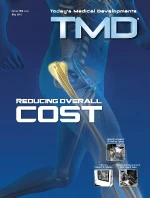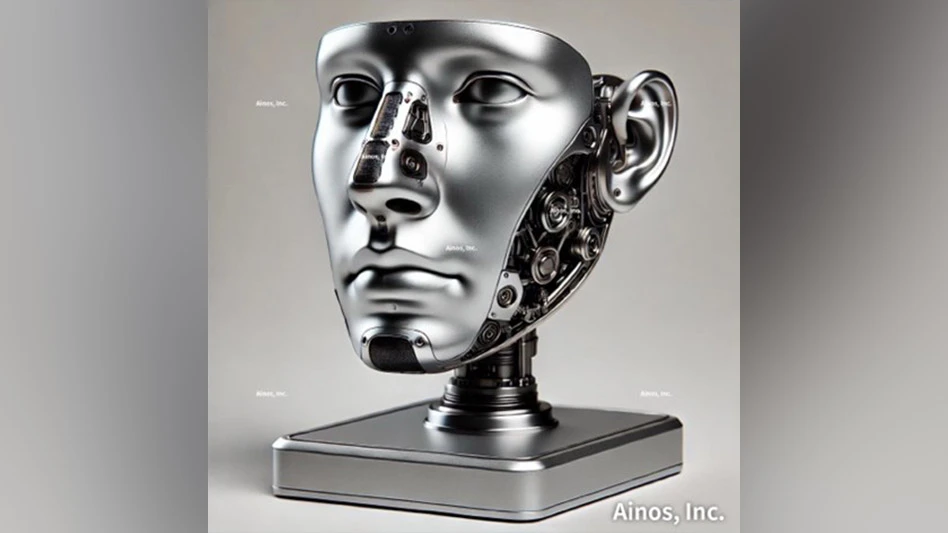 Using VoluMill toolpaths, cycle times on this incubator were cut by 20 minutes.Advanced Machining Systems is a full-service CNC machining and design shop that manufactures components for the medical industry. AMS recently embarked on a top-to-bottom analysis of its operations to determine why it was having trouble winning new business.
Using VoluMill toolpaths, cycle times on this incubator were cut by 20 minutes.Advanced Machining Systems is a full-service CNC machining and design shop that manufactures components for the medical industry. AMS recently embarked on a top-to-bottom analysis of its operations to determine why it was having trouble winning new business.
Formed in 2002, the company’s philosophy is to partner with customers through the designing, modeling, and prototyping phases of product development, culminating in optimized production. AMS employs SolidWorks 2010 CAD software and Mastercam X4 with solids capability to support its business model. A new 10,000ft2 plant was dedicated in 2006 to house the entire operation, including CNC machining centers, turning and turn/mill centers, extensive quality-control equipment, and all business processes.
AMS has streamlined its workflow, moving from single workholding devices to gang setups to minimize setup times, as well as investing in dedicated preset tooling since early 2009. In addition, the company focuses machines and areas of the shop for certain types of parts, families of parts, and sizes of parts, in order to maximize handling efficiency.
Biggest Benefit
The change that has had the greatest impact, according to AMS Manufacturing Engineer Mark Christiansen, has been the addition of VoluMill, the high-speed-machining toolpath engine from Celeritive Technologies. Since VoluMill runs as a fully integrated plug-in to Mastercam, AMS was able to incorporate it in their parts programming without missing a beat. Christiansen says, “I use VoluMill wherever I can now: profiles, slots, pockets, steps. I have been able to save at least 50% on my cycle time, even up to 80% in many cases, and we have slashed programming time, especially on complex parts. As a result, AMS is now more profitable on current work, much more competitive on new business quotes, and more responsive to customer’s needs.”
VoluMill is an ultra-high-performance, plug-in toolpath engine to be used in place of traditional roughing methods when ease of programming, reducing cycle times, extending tool life, and reducing the stress on machine tools is a priority. This single-algorithm software program allows the programmer to determine and utilize the optimum material removal rate for any combination of part geometry, material, machine, and cutting tool quickly and easily. The machining toolpath engine generates a dynamic toolpath that delivers the most consistent cutting conditions possible, allowing for use of the entire flute length of the tool, which can significantly reduce cycle times and wear on cutting tools and machines.
Christiansen learned about the high-speed-machining toolpath engine from a colleague who told him how much it was reducing his company’s programming and cycle times. “So I went to the VoluMill website, tried it, and discovered it did everything they claimed, plus it reduced my tool inventory by allowing me to use solid endmills versus indexable face milling cutters,” he reveals.
Application Time Savings
AMS works within a mix of aviation and medical applications. A medical industry customer contracts AMS to machine 11" x 11" x 2" 6061 aluminum incubators for testing procedures. The combination closed and open pocket part used to take 27 minutes to machine using traditional Mastercam toolpaths with a three-flute cutter running at 3,600rpm and 36ipm. With VoluMill, the pocket routine is cut at full depth with a 0.50", three-flute endmill at 10,000rpm and 300ipm in less than 7 minutes; an incredible 75% reduction in cycle time. “At a shop labor rate of $75 per hour, you are talking some real savings,” Christiansen states. “This job paid for VoluMill three times over.
“I cannot take nearly as deep a cut with Mastercam toolpaths as I can with the smooth and fluid toolpaths generated by VoluMill,” Christiansen says. “Cutting tool manufacturers recommend programming the DOC for their tools at two times diameter as a compromise for those places in the traditional toolpath where the cutter engages excess material. But with VoluMill I can program up to four times the diameter or the full flute length of the tool. I’m taking a 0.50" endmill 2" deep. VoluMill automatically takes care of the cutter and machine by not allowing the cutter to exceed the material removal limits it is programmed for like other toolpath engines do.”
Responsiveness
In addition to making it faster, easier, and more cost effective for AMS to produce parts, the system also allows the shop to be more responsive to its customers. For example, an engineer from a local company recently walked into the shop needing four different spacers that were to be used in a mold for a project his company was working on at that time. He told Christiansen he was in a rush so he needed the parts immediately.
“He was a new client,” Christiansen recalls. “He needed the job so fast that we did not even go through our usual new product design and order processes. We designed and programmed the four parts from hand sketches and then machined them in less than an hour. We never would have been able to be that responsive before. The programming and machining process would have taken us at least 5 hours before VoluMill,” Christiansen claims.
One of the parts was a 44" x 2.125" piece machined from 1045 steel bar stock. The run time was 2 minutes using a 1/2" diameter, five-flute carbide endmill run at 315ipm and 10,000rpm. AMS programmed a 1" axial DOC with a 0.125" radial DOC. Christiansen indicated that before implementing the high-speed-machining toolpath engine, he probably would have used a three-flute indexable milling cutter at 58ipm with a 0.118" depth of cut. He estimates that it would have taken 18 minutes to machine, or about nine times longer.
In addition to the savings of time in programming and machining, Christiansen also reports that the use of VoluMill toolpaths is substantially reducing the wear and tear on his tools and machines, and its use is changing the type and number of endmills AMS keeps in its inventory. “The biggest thing for me is the reduced wear on the endmills, and the ability to run our operation while stocking fewer tools,” Christiansen states.
Before AMS started using the system, it kept a large supply of different sizes of endmills in inventory. This was a natural requirement of the practice of starting with large tools to remove as much material as possible from an area, followed by a series of sequentially smaller tools to remove the material where the previous, larger tools could not fit. AMS has found that removing all of the material with smaller cutting tools that fit everywhere is significantly more efficient than its prior methods. With the company’s adoption of the high-speed-machining toolpath engine, AMS purchased just a few, smaller five-flute endmills. Since then, Christiansen says he “has not had to order any new endmills. With VoluMill, they just do not wear out, even on A6 tool steel.
“I have been able to push the boundaries on our endmills and even push the conservative speed and feed estimates provided by VoluMill,” he adds. “Moving forward, as we add a new machine – which we do about once a year – we will look for higher spindle speed and feedrate capability.”
The addition of the high-speed-machining toolpath engine has also had a tremendous impact on AMS’s ability to win new business. According to Christiansen, many of their competitors have slashed their shop rates in an effort to attract new customers and keep existing jobs, but AMS has not needed to follow suit. “With the increased productivity and reduced costs that it has brought to us, not only have we not lowered our shop rates, but we are able to win business against shops whose rates are now half of ours, and still attain higher margins than we were before. With VoluMill, our success rate on bids has improved dramatically.”
While AMS made many changes to its operation since early 2009, it is clear that this addition has had the most impact. By reducing part programming and machining time, especially on complex parts, AMS is more profitable, more competitive on new business quotes, and more responsive to its customers in the medical industry as well as others. Those are results that breed success.
Celeritive Technologies, VoluMill
Cave Creek, AZ
celeritive.com
Advanced Machining Systems
Bend, OR
amsbend.com

Explore the May 2010 Issue
Check out more from this issue and find your next story to read.
Latest from Today's Medical Developments
- German robotics and automation in a downturn
- Blueshift’s AeroZero
- November USMTO grow from October
- Platinum Tooling’s custom and special tooling
- Top 5 global robotics trends 2025
- Accumold’s micro molding innovations
- Methods Machine Tools, Multiaxis, announce AI solution investment
- MGS to showcase global expansion and healthcare CDMO expertise





